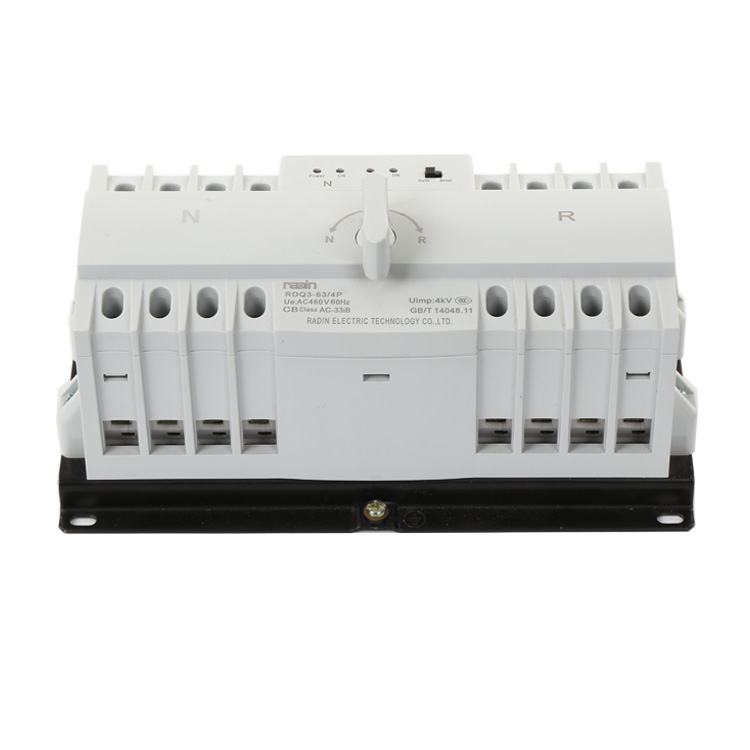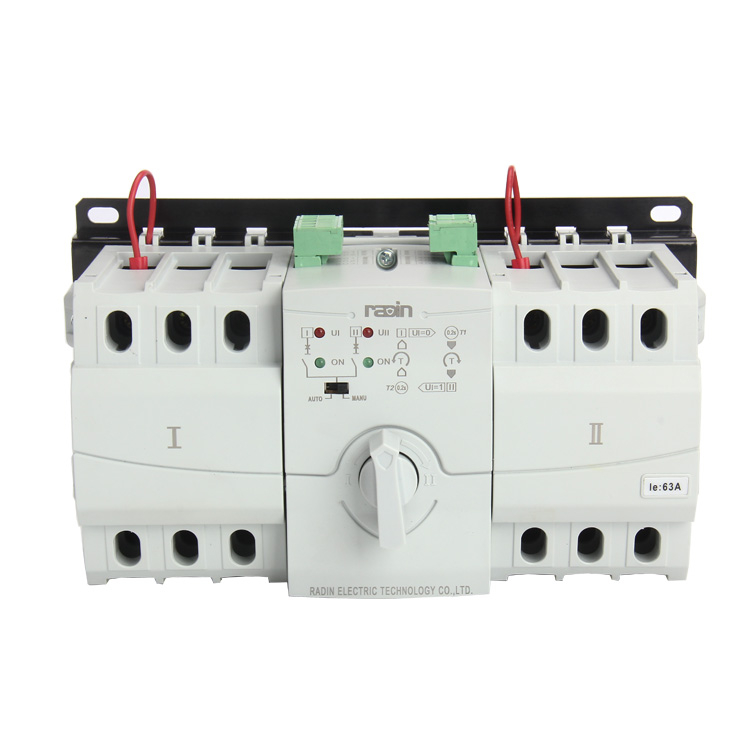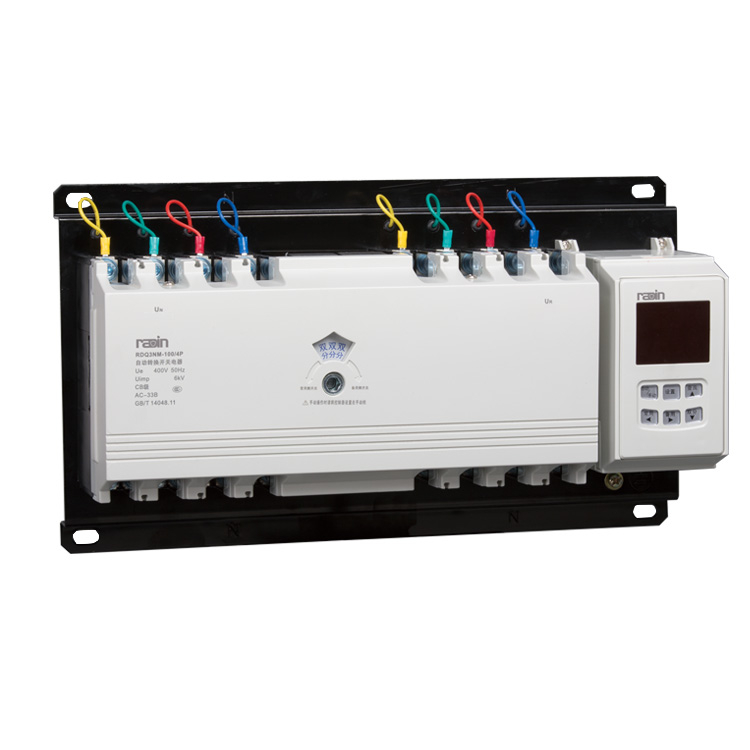- All
- Product Name
- Product Keyword
- Product Model
- Product Summary
- Product Description
- Multi Field Search
Views: 0 Author: Site Editor Publish Time: 2025-10-16 Origin: Site








In the realm of power management, the CB Class Automatic Transfer Switch (ATS) stands as a pivotal component, particularly for industrial applications. These switches are designed to ensure seamless power transfer during outages, thereby enhancing the reliability of power systems. The CB Class Automatic Transfer Switch is specifically engineered for heavy-duty industrial uses, featuring robust construction and reliable operating mechanisms. It offers comprehensive protection functions and status monitoring capabilities, making it ideal for various industrial power management requirements. This article delves into the intricacies of CB Class ATS, exploring its design, functionality, and its role in improving power system reliability.
The CB Class ATS is a type of automatic transfer switch that is built on the framework of a circuit breaker. Unlike the PC Class ATS, which primarily functions as a switching mechanism without short-circuit breaking capacity, the CB Class ATS is equipped with an overcurrent release. This feature allows it to make, carry, and break short-circuit currents, providing a dual function of switching and protection. This makes it a reliable choice for general industrial and civil construction projects where power outage time requirements are less stringent.
One of the standout features of the CB Class ATS is its ability to handle short-circuit events. The rated operating short-circuit breaking capacity (Ics) of the main circuit breaker in the CB Class ATS is crucial for its performance. For effective functioning, the Ics should be greater than or equal to the expected short-circuit current of the circuit. Additionally, the short-time withstand current (Icw) should also meet or exceed the expected short-circuit current. These specifications ensure that the CB Class ATS can manage short-circuit events without compromising its functionality.
The CB Class ATS is particularly advantageous in scenarios where the power outage time can be greater than or equal to 1.5 seconds. This makes it suitable for general industrial and civil construction projects. Its protection characteristics and cost advantages allow it to carve out a niche in the market by offering reliable solutions at competitive prices. Furthermore, the CB Class ATS is equipped with excellent durability and safety features, making it a preferred choice for heavy-duty industrial applications.
When comparing CB Class ATS with PC Class ATS, the primary difference lies in their ability to break short-circuit currents. While PC Class ATS is designed for load transfer between power sources without short-circuit breaking capacity, CB Class ATS provides both switching and protection. This dual functionality makes CB Class ATS more robust and self-sufficient, particularly in applications where reliability is paramount.



The design and development of CB Class ATS involve a comprehensive approach to ensure reliability and efficiency. Manufacturers like Radin Electric have established a reputation for producing high-quality automatic transfer switches. With over 20 years of experience in research and production, Radin Electric continues to innovate in the field of power transmission and distribution products. Their commitment to quality is evident in their compliance with ISO9001, TUV, CE, CV, and RoHS standards.
Radin Electric employs advanced manufacturing processes, including a fully automatic production line, to ensure efficient production and reliable quality. Their professional engineer team is dedicated to the self-design and development of automatic transfer switch products, resulting in unique and patent designs across their product range. This dedication to innovation and quality has enabled Radin Electric to establish long-lasting partnerships with clients worldwide.
While the CB Class ATS offers numerous advantages, there are challenges and considerations that must be addressed to ensure optimal performance. One of the main considerations is the balance between protection and conversion properties. The overcurrent release in the CB Class ATS may prevent it from switching after tripping, which emphasizes the need for careful planning and measures to ensure the continuity of power supply to emergency loads.
To address potential disruptions, it is essential to implement comprehensive safeguards. This includes ensuring that the rated operating short-circuit breaking capacity and short-time withstand current specifications are met. By considering these factors and implementing the necessary measures, the CB Class ATS can provide the protection and reliability required for general industrial and civil construction projects.
In conclusion, the CB Class Automatic Transfer Switch is a versatile solution that meets the specific needs of general industrial and civil construction projects. Its ability to interrupt short-circuit currents and provide necessary protection makes it a compelling choice for applications with more relaxed outage time requirements. By balancing protection and conversion characteristics, the CB Class ATS offers a cost-effective option without compromising performance. For more information on the CB Class Automatic Transfer Switch, consider exploring additional resources.
Q1: What is the primary function of a CB Class Automatic Transfer Switch?
A CB Class Automatic Transfer Switch primarily functions to ensure seamless power transfer during outages, providing both switching and protection capabilities.
Q2: How does a CB Class ATS differ from a PC Class ATS?
The main difference lies in their ability to break short-circuit currents. CB Class ATS provides both switching and protection, while PC Class ATS is designed for load transfer without short-circuit breaking capacity.
Q3: What industries benefit most from using CB Class ATS?
Industries with less stringent power outage time requirements, such as general industrial and civil construction projects, benefit most from using CB Class ATS.
Q4: What are the key specifications for CB Class ATS performance?
Key specifications include the rated operating short-circuit breaking capacity (Ics) and short-time withstand current (Icw), which should meet or exceed the expected short-circuit current of the circuit.
Q5: How does Radin Electric ensure the quality of their CB Class ATS products?
Radin Electric ensures quality through compliance with ISO9001, TUV, CE, CV, and RoHS standards, and employs advanced manufacturing processes for efficient production and reliable quality.
Q6: What challenges are associated with using CB Class ATS?
Challenges include balancing protection and conversion properties and ensuring the continuity of power supply to emergency loads after tripping.
Q7: What measures can be taken to ensure optimal performance of CB Class ATS?
Optimal performance can be ensured by meeting key specifications, implementing comprehensive safeguards, and planning for potential disruptions to maintain power supply continuity.